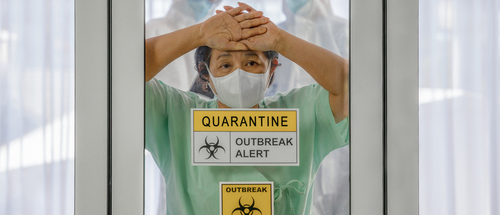In the Democratic Republic of the Congo, a baffling health crisis known as the ‘Crying Disease’ is creating chaos, claiming lives, and prompting global intervention. A mysterious ‘crying disease’ has erupted in the country, overwhelming local health systems. International aid organizations are racing to contain the outbreak while researchers struggle to identify the cause of this devastating illness sweeping vulnerable communities.
Unidentified Illness Strikes
In the Democratic Republic of the Congo, a mysterious ailment called the ‘Crying Disease’ has resulted in over 1,000 infections and 60 deaths thus far. Mainly targeting children, symptoms of this illness include fever, vomiting, unceasing crying, and diarrhea. Although viruses like Ebola and Marburg have been ruled out, malaria has been detected in some cases, creating additional challenges for diagnosis and treatment. The disease’s mysterious transmission raises concerns regarding rapid containment.
here is what i know about the mysterious illness in the democratic republic of congo
3 children ate a bat carcass & died within 48 hours
as of Feb. 19, 955 cases have been reported across at least two villages
ebola, marburg, dengue and yellow fever have been ruled out… pic.twitter.com/puknpfrXtT
— Taylor (@taylor_vahey) February 28, 2025
Origin and Symptoms of the Disease
Investigations traced the outbreak back to three children who died after consuming a bat carcass, a known carrier of infectious diseases, including Ebola and coronaviruses. The disease’s symptoms evolve rapidly, leading to death within 48 hours, with patients experiencing fever, chills, nausea, and intense thirst, among other signs.
“A mystery illness has caused over 50 deaths amid multiple outbreaks in the Democratic Republic of Congo, according to doctors.” – doctors.
Mystery illness in Congo kills more than 50 people — just hours after they felt sick.
The interval between the onset of symptoms – from fever to death… 48 hours.The latest disease outbreak in the Democratic Republic of Congo began on Jan. 21, with 419 cases recorded and 53… pic.twitter.com/gdRWcVw3UU
— ∼Marietta (@MariettaDaviz) February 25, 2025
The World Health Organization has reported that transportation and healthcare infrastructure difficulties exacerbate the outbreak’s spread, particularly considering the geographical isolation in areas affected by the disease.
Response Strategies and Challenges
The World Health Organization asserts an urgent need to enhance diagnostic testing and update reporting procedures to prevent future outbreaks. The WHO emphasizes the necessity for intensified testing, early case detection, and better reporting mechanisms. Though some malaria-positive cases appear, confirming the disease’s true nature remains elusive. The organization is actively supplying medical resources and coordinating with local authorities.
“Further efforts are needed to reinforce testing, early case detection and reporting, for the current event and future incidents.” – World Health Organization.
On a broader scale, concerns over diminished U.S. involvement in health organizations worldwide have surfaced, suggesting that previous international partnerships would have bolstered health responses more effectively. The outbreak’s progression and eventual containment remain critical indicators of ongoing global health efforts.
Sources:
https://www.cbsnews.com/news/mystery-disease-congo-what-we-know/
https://www.cbsnews.com/news/mystery-disease-congo-what-we-know/

